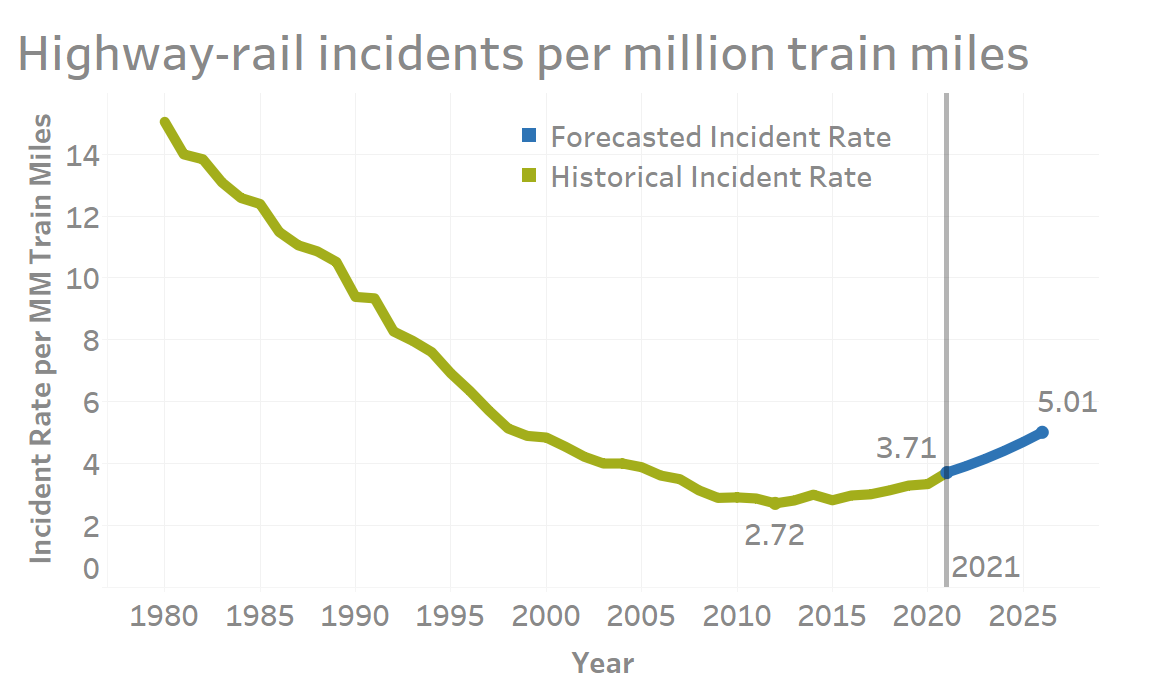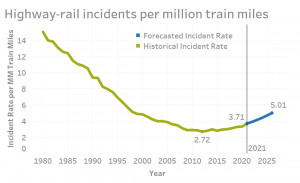What Can Be Done to Reverse the Upward Trend in Highway/Rail Accidents?

After three decades of steady decreases, the rate of highway/rail accidents bottomed out in 2012. But it has been trending upward ever since.
The graph shows that in 2012 the incident rate reached its all-time low of 2.72 incidents per million train miles This is across all railroads, not just the Class 1s.
The most recently released data, as of March 2022, shows the rate at 3.71. This is after steady increases in the annual change in all but one of the years since the all-time best of 2012. Furthermore, amongst the Class 1s, all but one of them saw increases in the last year (2020 to 2021), with the exception of CN, which was essentially flat.
In the predictive analytics world, we like to ask, “what if these trends continue?” In this case we applied a fairly sophisticated time series forecasting model to inform the question.
The model indicates that, if it continues unabated, within five years (end of 2026) the rate will be around 5.01 (blue line in the graph). That would reverse more than 25 years of progress, taking us back to 1998 historical levels.
The factors driving this sustained upturn are subject to speculation. We have our own hypotheses, yet to be tested formally. But we do know from real-world experience that data- and analytics-driven approaches can help. See, for example, this case study.
Our modeling experience in this domain teaches us that there are controllable and uncontrollable factors behind incidents. Although recent action is starting to occur, mostly due to FRA mandates regarding state action plans, it is time for the industry and public authorities to better leverage data that is already available. This approach can isolate and focus on those controllable factors to slow and eventually reverse the trend.
For an overview of how we approach this problem, please see this one-page brief on our Highway/Rail Crossing Safety Solution.
Additionaly, data analytics is considered to be a part of another, more broad FRA-mandated program, the so-called “Risk Reduction Program.” Generally, a data-driven approach to a variety of safety issues – not just with grade crossings — is what improves public and employee safety.
We have a long history of analytical work in the domain of safety and in the rail industry generally. We invite anybody with an interest in addressing this problem to collaborate with us.
